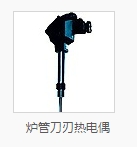Introduction
The Internet of Things (IoT) is transforming industries by offering seamless device control, real-time monitoring, and automation. From industrial applications to home automation, IoT is playing a crucial role in making operations more efficient and connected. One of the key areas where IoT is making an impact is device control and thermal resistance monitoring. This article explores IoT device controls, remote control capabilities, thermal resistance, and how to buy thermocouples online.
IoT Device Controls
IoT enables users to control devices remotely and efficiently. It allows businesses to automate processes, reduce human intervention, and optimize energy use.
Real-World Applications of IoT Device Control
-
Smart Homes: IoT-controlled lighting, security, and HVAC systems
-
Industrial Automation: IoT sensors regulate machinery and prevent overheating
-
Healthcare: Remote monitoring of medical devices for better patient care
IoT Remote Control
Remote control of devices through IoT enables users to operate machinery, home appliances, and industrial systems from anywhere.
Benefits of IoT Remote Access
-
Increased convenience and operational efficiency
-
Enhanced security through remote monitoring
-
Reduced downtime in industrial applications
Security Considerations in IoT Remote Control
-
Use of end-to-end encryption for data transmission
-
Regular firmware updates for security patches
-
Multi-factor authentication for device access
IoT Location Control System
IoT-powered location control systems help businesses track assets and monitor movement in real time.
Applications in Logistics and Fleet Management
-
Supply Chain Monitoring: Tracking goods in transit
-
Fleet Management: Optimizing vehicle routes and fuel efficiency
-
Security Applications: Preventing theft and unauthorized movement
Quantitative Control in IoT
Quantitative control refers to the use of data analytics to make informed decisions in IoT systems. Sensors and real-time data collection play a crucial role in managing complex industrial processes.
Understanding Thermal Resistance
Thermal resistance measures a material’s ability to resist heat flow. It plays a critical role in electronics, HVAC systems, and industrial applications.
Types of Thermal Resistance
-
Air Thermal Resistance: Determines how heat transfers through air
-
Electrical Thermal Resistance: Manages heat dissipation in electronic circuits
Buy Thermal Resistance Components Online
When purchasing thermal resistance components, consider the material type, heat tolerance, and application requirements.
Air Thermal Resistance and Its Importance
Air thermal resistance is crucial in designing energy-efficient HVAC systems and industrial cooling solutions.
Ways to Improve Air Thermal Resistance Efficiency
-
Use better insulation materials
-
Optimize airflow in ventilation systems
-
Implement IoT-based smart temperature monitoring

Electrical Thermal Resistance: A Key Factor in Electronics
In electronics, managing heat dissipation ensures the longevity of devices. Copper, aluminum, and thermally conductive polymers are common materials used in electrical thermal resistance applications.
Buy Thermocouple Online: A Comprehensive Guide
Thermocouples are essential for temperature measurement in industrial and scientific applications.
Where to Buy High-Quality Thermocouples Online
-
Amazon and eBay for general use thermocouples
-
Specialized electronics retailers for industrial-grade thermocouples
High-Temperature Thermocouple: Key Features & Uses
High-temperature thermocouples withstand extreme heat and are widely used in metallurgy, manufacturing, and aerospace industries.
Temperature Controller with Thermocouple
A temperature controller regulates the temperature using thermocouple feedback, ensuring precision in industrial processes.
Thermocouple Meter: A Must-Have for Precision Monitoring
A thermocouple meter helps in accurately measuring temperature. Consider factors such as accuracy, display type, and compatibility when purchasing one.
The Future of IoT in Device and Temperature Control
The integration of AI with IoT will make device control and temperature monitoring smarter. Future advancements will focus on predictive maintenance, automation, and efficiency improvements.
Conclusion
IoT has revolutionized device control and thermal resistance management across various industries. From remote access to precise temperature monitoring, IoT-enabled solutions improve efficiency, security, and convenience. As technology advances, the combination of IoT and AI will further enhance automation and control.
FAQs
-
What is the primary use of IoT in industrial applications?
-
IoT is used for remote monitoring, automation, and predictive maintenance in industries.
-
-
What is a thermocouple used for?
-
A thermocouple measures temperature in industrial and scientific applications.
-
-
Where can I buy a thermocouple online?
-
You can buy thermocouples from Amazon, eBay, and specialized electronics stores.
-
-
How does IoT improve remote device control?
-
IoT allows real-time access and automation, enhancing efficiency and security.
-
-
What is the role of thermal resistance in electronics?
-
It helps manage heat dissipation to prevent device overheating.
-


